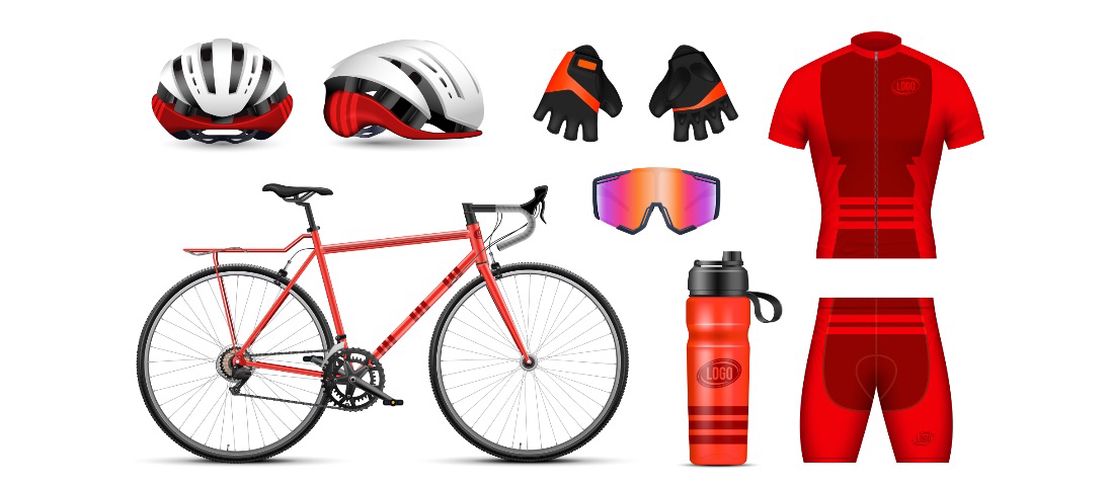
Cycling Gear Essentials for Beginners
- Axel Rivera
- Gear
- April 20, 2025
So, you’ve decided to get into cycling. Maybe you dusted off a hand-me-down road bike. Maybe you just dropped more than you’d like to admit on something sleek and carbon-y. Either way, welcome. You’re officially one of us.
Now let’s talk gear—not the fancy stuff the pros obsess over, but the real essentials that make riding safer, more comfortable, and actually enjoyable. This isn’t a shopping list for Instagram clout. It’s what you actually need to ride smart, stay sane, and come back for more.
1. A Helmet (Yes, You Really Do Need One)
Think of it like a seatbelt for your brain. Modern helmets are lightweight, well-ventilated, and many come with MIPS tech (a liner that helps reduce rotational force during impact). You don’t need the one Tour de France riders wear. Just get one that fits snug, doesn’t wiggle when you shake your head, and meets safety standards.
Personally, as long as a helmet has MIPS, I keep my purchase at $100 or below—I refuse to pay more than that. It’s just not necessary for most riders. Your skull will thank you either way.
2. Padded Shorts: Not a Fashion Statement
They look weird. They feel… weirder. But after an hour in the saddle? Game-changer. Padded cycling shorts reduce pressure and chafing where it matters most. You can wear them under baggies if you’re not into the lycra look. No shame. Your comfort is the priority—not the outfit.
Important: You’re supposed to go commando in them. Yep—no underwear. It might sound odd at first, but skipping the extra layer helps prevent friction and keeps things way more comfortable on longer rides.
3. A Floor Pump with a Gauge
Tires matter more than you think. Underinflated? You’ll feel sluggish and risk pinch flats. Overinflated? Your ride will feel like punishment. A floor pump with a pressure gauge lets you dial in the sweet spot for your tire type and body weight. Pro tip: Check your pressure before every ride. It takes 30 seconds and saves a lot of headaches.
4. Lights: Not Just for Night Riders
Daytime riding without lights is like playing hide-and-seek on a freeway. Front and rear bike lights—especially those with a flashing mode—make you visible in daylight, not just at dusk. Treat them like your helmet: something you never ride without.
5. Water Bottle and Cage (Hydration ≠ Optional)
You don’t need an energy drink or a hydration vest worthy of an ultramarathoner. A basic water bottle and cage mounted to your frame will do just fine. Drink before you feel thirsty, especially on warm days—dehydration sneaks up faster than you think. For longer rides or hot summer days, bring two bottles if your frame can carry them. You’ll be glad you did.
6. A Spare Tube, Tire Levers, and Mini Pump (aka The “Oops” Kit)
Eventually, you’re going to get a flat. It’s a rite of passage. When it happens, having the basics to fix it on the road is the difference between a quick stop and the world’s most awkward walk home. You don’t have to be a bike mechanic—just watch a couple of YouTube videos and practice once or twice. You’ve got this.
7. Gloves: Because Falling is Inevitable
Even if you’re not planning on wiping out (who is?), gloves help with grip, reduce road buzz, and protect your palms when you inevitably hit the deck. Also: tan lines. Gloves help them match your sleeves. It’s the little things.
8. A Saddle That Fits You
Let’s kill a myth: more padding ≠ more comfort. What matters is fit. Everyone’s sit bones are different. A saddle that works for your friend might feel like torture to you. Most bike shops will let you try different models or even do a saddle fit. Worth it.
Final Thoughts
You don’t need to blow your paycheck to get started. Most of this gear is about comfort, safety, and keeping you riding consistently—not looking pro. Build your setup over time. Borrow where you can. Upgrade when it makes sense. But always start with the basics that make every ride better.
And remember: The best gear is the one you actually use.